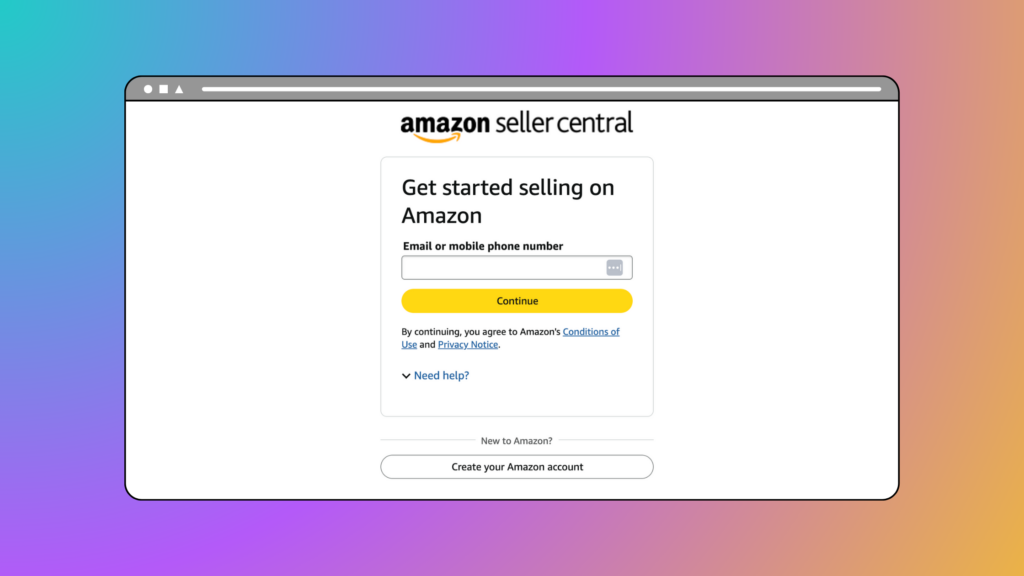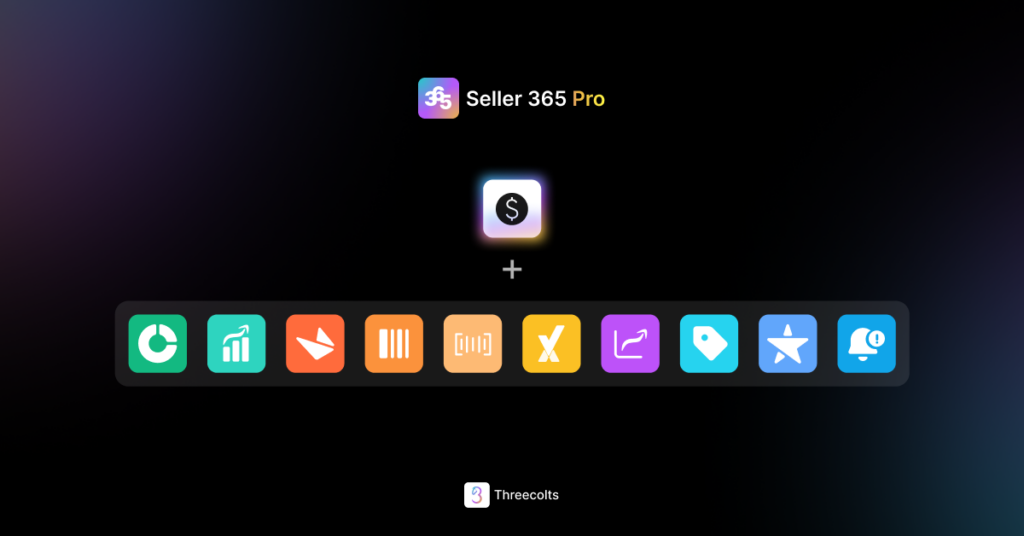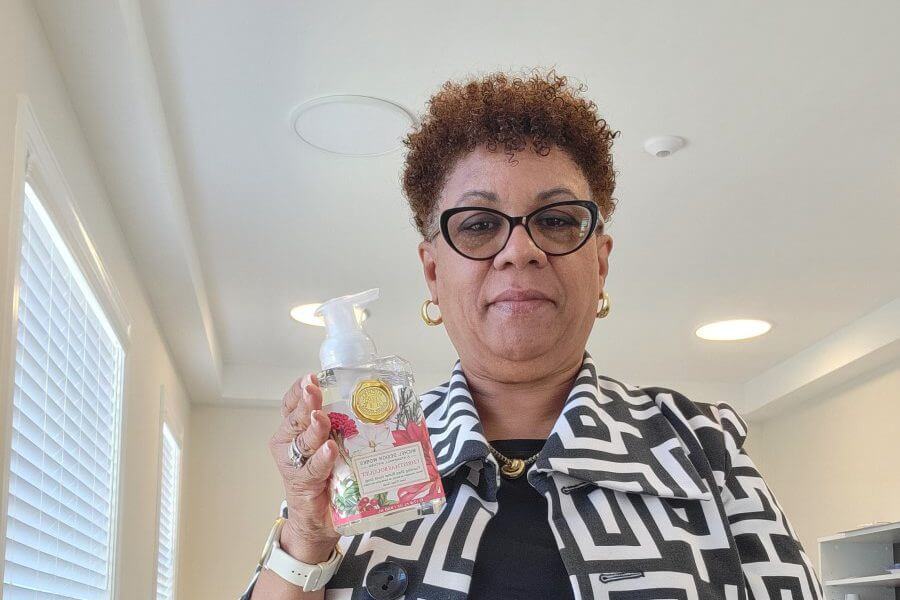- Blog
-
For Sellers
The ultimate Amazon advertising guide for sellers
Amazon Ads aren’t just for visibility. They’re how sellers scale.
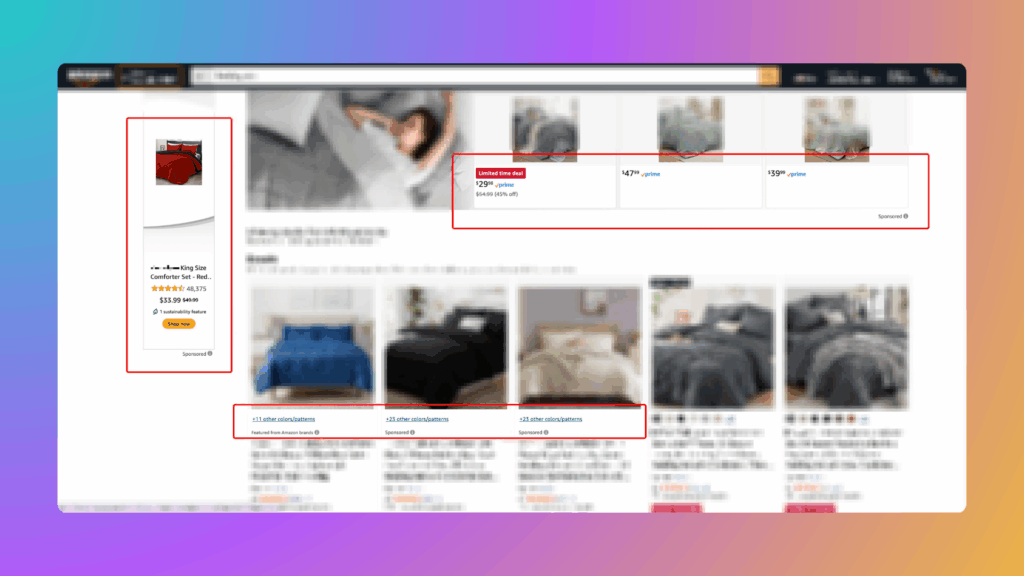
Amazon advertising has become essential for seller success, with the average seller attributing 30% of their total sales to Amazon Ads. The platform offers flexible budgets with no minimum spend requirements, and most campaigns operate on cost-per-click or cost-per-impression models that you can launch in minutes.
Amazon’s advertising ecosystem goes far beyond simple product promotion. The platform leverages first-party shopping and streaming data to help you reach relevant audiences at every stage of their journey, from initial awareness to loyal repeat customers.
What is Amazon PPC advertising?
Amazon PPC (pay-per-click) advertising operates as an auction-based system where sellers bid on keywords and placements to promote their products. You compete with other sellers for prime real estate across Amazon’s search results, product detail pages, and homepage.
The auction works differently from traditional search engines. Amazon considers your bid amount, ad relevance, and product performance to determine which ads appear and where they’re placed. Your ad quality score includes factors like click-through rates, conversion rates, and customer reviews.
Several key metrics determine your advertising success. Cost Per Click (CPC) measures what you pay each time someone clicks your ad. Advertising Cost of Sales (ACOS) shows your ad spend as a percentage of attributed sales. Return on Ad Spend (ROAS) calculates how much revenue you generate for every dollar spent on advertising.
Types of Amazon PPC ads for sellers
Sponsored Products
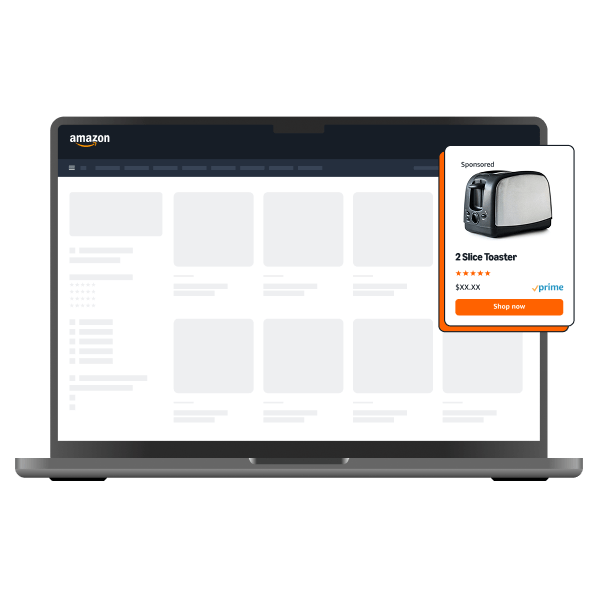
Sponsored Products are cost-per-click ads that promote individual product listings across Amazon and select partner sites. These ads appear at the top of search results, alongside listings, within search results, and on product detail pages across desktop, mobile, and the Amazon app.
You can choose between automatic and manual targeting for these campaigns. Automatic targeting lets Amazon’s algorithm select keywords based on your product information, making it perfect for discovering new keyword opportunities. Manual targeting gives you complete control over which keywords or specific products (ASINs) trigger your ads.
Sponsored Products work best for driving direct conversions since they send shoppers straight to your product detail page. These ads only appear when your product is in stock and eligible for the Featured Offer, ensuring you don’t waste spend on unavailable inventory.
Sponsored Brands
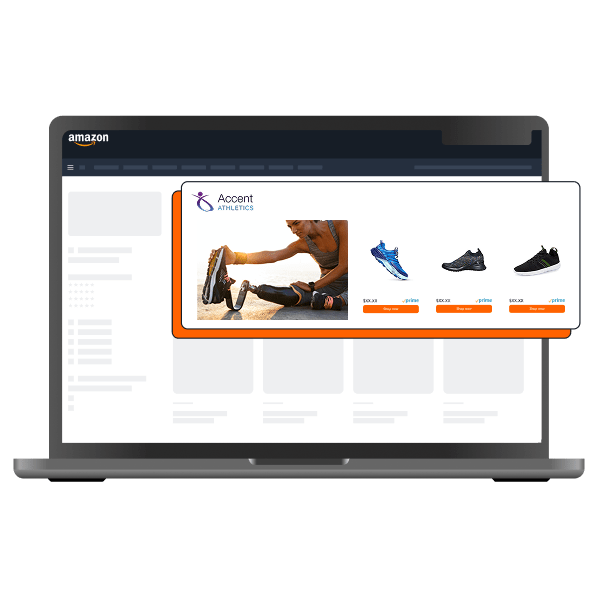
Sponsored Brands require enrollment in Amazon Brand Registry but offer premium placement opportunities that Sponsored Products can’t match. These ads showcase your brand logo, custom headline, and multiple products in prominent positions above search results and on product detail pages.
You have three format options with Sponsored Brands:
- Product collection ads display your logo, headline, and up to three products.
- Video ads autoplay within shopping results to grab attention through motion and sound.
- Store spotlight ads drive traffic directly to your Brand Store for a more immersive shopping experience.
These campaigns support both CPC and cost-per-thousand-viewable-impressions (vCPM) billing, giving you flexibility in how you optimize for performance. The platform tracks new-to-brand metrics, helping you understand how effectively you’re attracting fresh customers to your products.
Sponsored Display
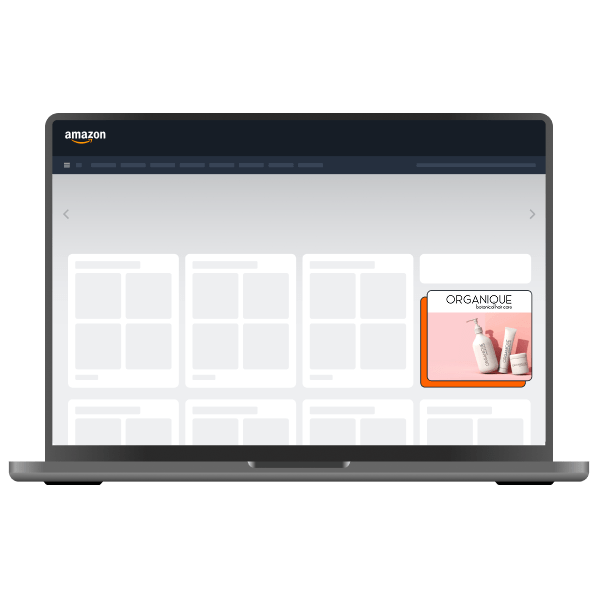
Sponsored Display uses Amazon’s shopping and streaming data to reach customers both on and off the Amazon platform. These programmatic ads appear on the Amazon homepage, product detail pages, search results, Twitch, IMDb, and thousands of third-party websites and apps.
The targeting options go beyond simple keywords. You can target audiences based on their shopping behaviors and streaming preferences, or use contextual targeting to reach people browsing related content. The system dynamically optimizes ad placements based on your campaign goals, whether you’re focused on conversions, reach, or traffic generation.
Amazon sellers need Brand Registry enrollment for Sponsored Display, but the platform also accepts non-Amazon businesses in beta testing. The quick setup process and lack of minimum spend requirements make it accessible for sellers of all sizes.
Brand Stores
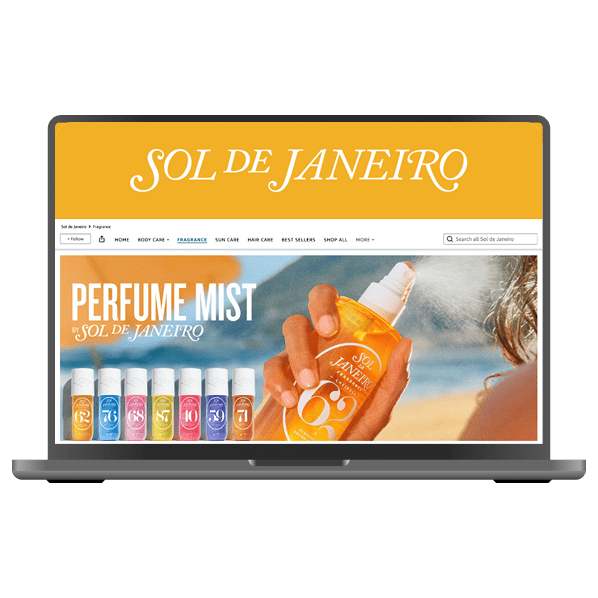
Brand Stores represent one of Amazon’s most valuable free advertising tools for registered brands. These customizable multipage storefronts let you showcase your entire product catalog, tell your brand story, and create immersive shopping experiences that go far beyond individual product listings.
The performance impact is remarkable. According to Amazon’s internal data in 2024, shoppers who visit Brand Stores purchase 53.9% more frequently and have 71.3% higher order values compared to those who never visit your store. New-to-brand customers who visit your store are 62.7% more likely to make a purchase.
Setting up a Brand Store requires no coding skills thanks to the drag-and-drop builder with professional templates. Your store gets a branded URL like amazon.com/yourbrand, making it easy to drive traffic from external marketing efforts. Store Insights provides detailed analytics on sales, visits, page views, and traffic sources.
Amazon Live
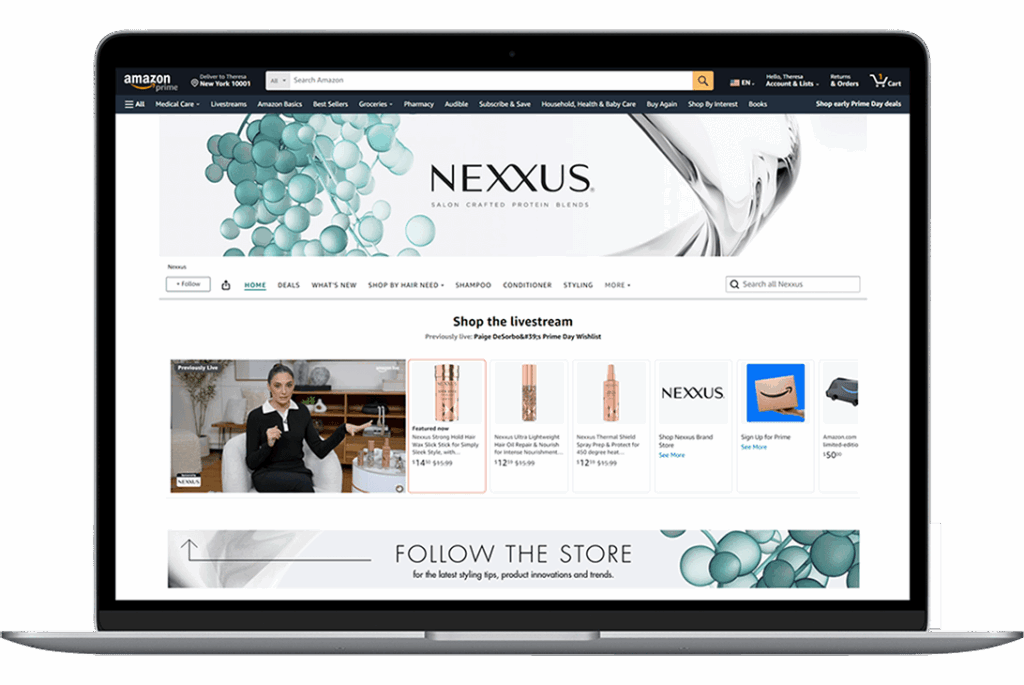
Amazon Live creates interactive, shoppable livestreams that combine video content with real-time customer engagement.
Customers can ask questions, view product demonstrations, and make purchases directly during the stream. The format works particularly well for product education and building authentic connections with your audience.
The performance data shows impressive results when Amazon Live integrates with other advertising formats. According to Amazon, audiences exposed to Live content plus other ads had a 17x higher purchase rate and 55% higher branded search rates. A grocery brand’s back-to-school livestream even achieved 74% higher click-through rates and 14% better ROAS compared to standard campaigns.
How to set up effective Amazon advertising campaigns
Campaign structure forms the foundation of successful Amazon advertising. So, organize your campaigns by product categories, brand lines, or performance goals to make management and optimization easier. Create separate campaigns for different match types in manual targeting to better control budget allocation and bidding strategies.
As for keyword research, start with understanding how your customers search for products. Use Amazon’s search suggestions, competitor analysis, and other tools to identify relevant terms. Start with broad match keywords to discover new opportunities, then create exact match campaigns for your highest-performing terms.
Budget allocation requires balancing discovery with performance.
- Dedicate 70% of your budget to proven keywords and campaigns that generate profitable sales.
- Reserve 30% for testing new keywords, audiences, and creative formats.
- Then, monitor your Total Advertising Cost of Sales (TACOS) across all campaigns to ensure overall profitability.
Creative best practices vary by ad type but share common principles. Use high-quality product images that clearly show your product’s key features and benefits. Write compelling headlines that include relevant keywords while highlighting your unique value proposition. Test multiple creative variations to identify what resonates with your target audience.
Advanced advertising strategies for sellers
Full-funnel advertising maximizes your reach and conversion potential by using multiple ad types together.
Start with Sponsored Display to build awareness among relevant audiences. Use Sponsored Brands to capture interest and drive traffic to your Brand Store. Convert browsers into buyers with targeted Sponsored Products campaigns.
Cross-campaign optimization involves sharing insights and data between your different advertising efforts as well. Use Brand Store analytics to understand which products generate the most interest, then increase Sponsored Products spending on those items. Apply keyword discoveries from automatic campaigns to expand your manual targeting strategies.
Seasonal advertising requires adjusting your approach throughout the year. Increase budgets during peak shopping periods like Black Friday, holiday seasons, and back-to-school periods. Shift keyword focus to match seasonal search trends, such as “gifts” during holidays or “outdoor” during summer months.
Performance measurement goes beyond basic metrics like ACOS and ROAS. Track new-to-brand percentages to understand customer acquisition effectiveness. Monitor organic rank improvements that result from increased advertising velocity. Measure the halo effect where advertising drives sales for products you’re not directly promoting.
Measuring and optimizing your advertising ROI
Key performance indicators for sellers extend beyond simple advertising metrics to include overall business impact. Track your Total Advertising Cost of Sales (TACOS), which measures ad spend against total sales, including organic revenue. Monitor Customer Lifetime Value (CLV) to understand the long-term impact of acquiring new customers through advertising.
These metrics matter because Amazon’s standard attribution window only tells part of the story. Amazon’s attribution typically captures sales within seven days of an ad click, but the impact often extends much longer. Track organic sales velocity improvements and Brand Store visits that occur after advertising campaigns launch to capture the full value of your advertising investment.
Once you understand what to measure, you need a systematic approach to improvement. Adjust bids based on performance data, increasing spend on profitable keywords while reducing or pausing underperformers. Test different match types, ad copy variations, and targeting options to continually improve results.
Your optimization efforts need to align with your operational realities. Scale up advertising when you have ample inventory to capitalize on increased demand. Reduce spend or pause campaigns when stock runs low to avoid stockouts that can hurt your organic rankings and waste budget on products you can’t fulfill.
Common mistakes sellers make (and how to avoid them)
- Budget mismanagement represents the most costly advertising mistake. Many sellers set daily budgets too low, causing campaigns to exhaust their spend early in the day and miss prime shopping hours. Others spread their budget too thin across too many campaigns, preventing any single campaign from achieving meaningful scale.
- Targeting mistakes include being too broad or too narrow in keyword selection. Overly broad targeting wastes spend on irrelevant searches, while overly narrow targeting limits your reach and discovery potential. Start broad to identify opportunities, then create focused campaigns around your best-performing terms.
- Negative keyword neglect allows your ads to appear for irrelevant searches, wasting budget and lowering performance metrics. Regularly review search term reports and add negative keywords to prevent your ads from showing for variations of your keywords that don’t convert. This is particularly important for broad and phrase match campaigns.
- Creative stagnation hurts long-term performance as customers become blind to the same ads over time. Refresh your ad creative regularly with new images, headlines, and value propositions. Test seasonal variations, promotional messaging, and different product angles to maintain engagement and performance.
The bigger picture: Integrating advertising with your seller operations
Advertising data provides valuable insights for your sourcing and inventory decisions. Products that perform well in advertising campaigns often indicate strong market demand that justifies increased inventory investment. Use advertising performance metrics to identify which products deserve more prominent placement in your Brand Store and marketing efforts.
Profit tracking becomes more complex but more important when advertising spend increases. Your advertising success means little if you’re not tracking true profitability, including all Amazon fees, storage costs, and operational expenses. Understanding your real margins helps you set appropriate ACOS targets and make informed bidding decisions.
Fortunately, there are tools like FeedbackWhiz Profits that can help you bring all your financial data into one dashboard. The platform automatically tracks Amazon fees and marketplace costs while letting you create custom expense categories for PPC spend, photography, prep services, and other business costs. This complete view of your expenses means you can see exactly how advertising spend impacts your bottom line across every product and marketplace.
Plus, FeedbackWhiz Profits is just one of 10 apps included in Seller 365 for $69/month. The bundle combines profit analytics with sourcing tools like Tactical Arbitrage, prep and shipping management through InventoryLab, automated repricing with SmartRepricer, and more. You basically get everything you need to run a profitable Amazon business in one place.
Ready to use advertising to the fullest and ensure true profitability? Try Seller 365 free for up to 14 days and see how the right tools help you make smarter decisions across every part of your business.



















